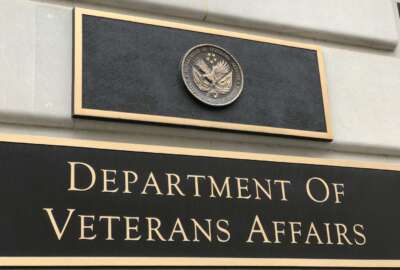Debt deal means big cuts for agency budgets
Congressional leaders and the White House agreed on a framework of spending cuts to raise the nation\'s debt ceiling. As part of the agreement, more than $900 b...
By Jack Moore
Federal News Radio
It came down nearly to the wire, but late Sunday night, President Barack Obama announced a deal had been struck to raise the federal government’s borrowing limit.
While the final deal splits the debt ceiling increase into two stages, it also means federal agencies will likely have to endure two steep rounds of budget cuts.
The deal
The deal would immediately increase the debt limit by $400 billion. The president is allowed to order another $500 billion in increases in the fall unless both the House and Senate override his decision by veto-proof margins.
The plan also creates a 12-person committee made up of both Democratic and Republican representatives and senators.The committee would be charged with enacting $1.5 trillion more in deficit cuts over 10 years. However, if the committee fails to produce at least $1.2 trillion in additional cuts by the end of November, the Office of Management and Budget would impose across-the-board federal spending cuts, split evenly between defense spending and domestic spending.
The cuts
Under the debt deal, cuts to federal spending and agency budgets will come in two doses. The first round of cuts is tied to the initial raise in the debt ceiling. The plan cuts more than $900 billion over 10 years from Cabinet agencies’ day-to-day operating budgets. It also caps spending on agency budgets for 2012 at $1.043 trillion, which is $7 billion less than what was spent in 2011.
In a statement, the White House said the plan would act as a “down payment” on future deficit-reduction efforts by “locking in historic spending discipline” between both domestic and DoD spending. For example, the initial $900 billion goal includes $350 billion in savings from the base defense budget, which the White House noted as the first defense cut since the 1990s.
The second dose of cuts occurs when the 12-person deficit-cutting committee, which follows a similar but non-binding debt commission created 18 months ago, makes its recommendations.
However, as the past few weeks of debate, inaction and standstill made clear, Congress may have a hard time coming to any kind of consensus. That’s where the trigger option comes in, which would institute automatic, across-the-board cuts to federal spending to be split evenly between domestic spending and defense spending.
The trigger option would apply harsh fiscal medicine, which the authors of the plan likely think will act as a deterrent to partisan gridlock, The Washington Post reported.
In the euphoria of the last-minute deal, most expect the full Congress to approve the deal. However, for federal agencies, the real news will likely come when details of initial budget cuts emerge.
(The AP contributed to this report).
Copyright © 2024 Federal News Network. All rights reserved. This website is not intended for users located within the European Economic Area.





